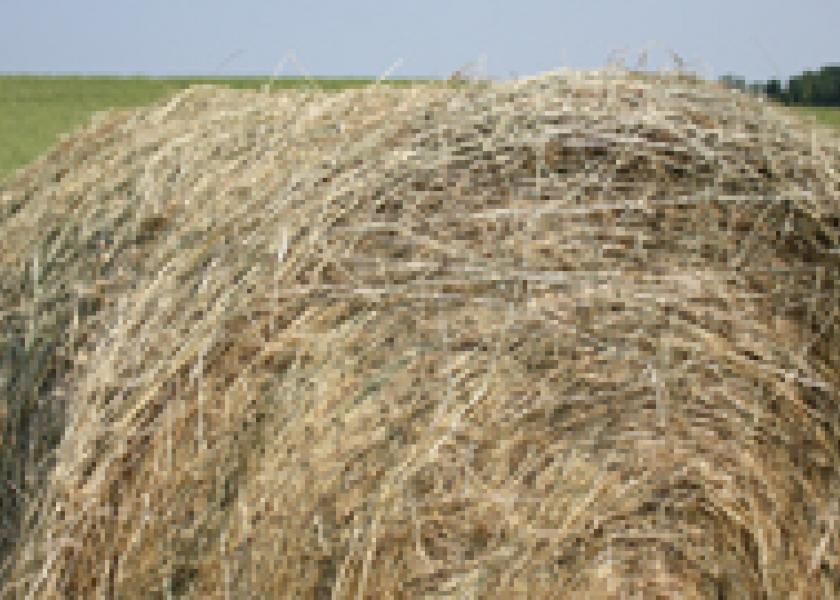Sorghum Harvesting Methods to Reduce Prussic Acid Poisoning

Harvest method affects the risk of prussic acid poisoning.
Forage sorghum, sudangrass and sorghum-sudangrass crosses (all in the genus Sorghum) contain a non-poisonous chemical called dhurrin. If these plants are damaged by freezing, the dhurrin is converted into prussic acid (cyanide) which is potentially very dangerous for animals eating these crops. Forage is usually considered safe to pasture or feed as green chop 5-6 days after a killing frost.
Pasture. Sorghum that has wilted and dried 5-6 days after being killed by frost is considered safe for grazing. The risk of prussic acid poisoning can be reduced by feeding ground cereal grains to the animals before turning them out to graze. The chance of problems on pasture can be further reduced by using heavy stocking rates (4-6 head per acre) and rotational grazing to avoid cattle selectively grazing the leaves. If new shoots develop after a frost the crop should not be grazed until this new growth is 2 feet tall.
Green Chop. Green chop forage is usually safer than the same material used for pasture because it is not selectively grazed. Whereas in the case of pasture only the leaves may be eaten, with green chop material the total plant is consumed. Stems act as safety devices `diluting' the high prussic acid content of leaves.
Silage. Sorghum silage is generally safe for feeding. Although the plant may contain toxic levels of prussic acid, much of the poison escapes as a gas during fermentation and when being moved for feeding. However, as a precaution, do not feed new silage for at least 3 weeks after harvesting and storing.
Hay. The prussic acid content of sorghum hay decreases as much as 75 percent while curing and is rarely hazardous when fed to livestock.







